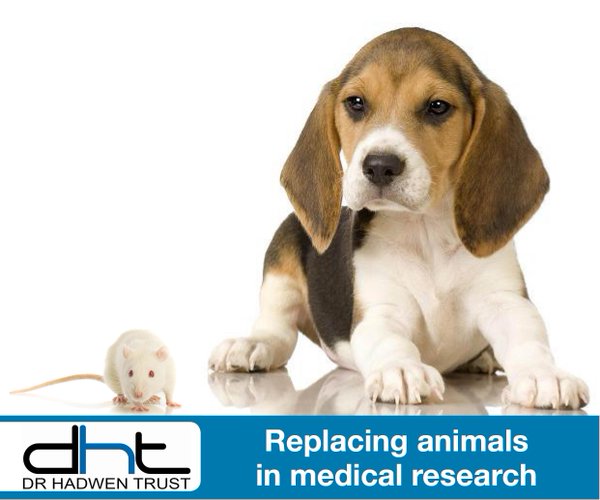Article by Sally Thompson on Veganuary.com
The Dr Hadwen Trust [DHT] is the UK’s leading non-animal medical research charity. We greatly admire their work so we invited them to contribute a ‘guest blog’ for Veganuary. Here is a fascinating insight into one possible area of replacement for the animals currently used in biomedical research.
Organs-on-a-Chip
Cell culture is a method where cells are grown outside their natural environment in a laboratory. It can be a difficult and challenging process, but one which is very exciting for scientists. Cell culture is an exciting alternative to experimenting on live animals, and there are a number of clear advantages to this type of experimentation.
Using cell culture (in the place of live animals) has allowed scientists to make a variety of important breakthroughs relating to understanding diseases and developing drugs, all without using live animals. We’re now at a point where scientists have taken this approach one step further, and can use cell culture to create 3D ‘organs-on-a-chip’. These are ‘organs’ made up of real, living human cells which mimic a real organ system.
One example is a ‘lung-on-a-chip’, an artificial living and breathing lung, which has recently been developed by scientists. This device doesn’t look like a human lung, but is a clear, flexible, thumb-sized block of polymer, composed of two tiny channels separated by a thin membrane. Air flows through one side, which is lined with human lung cells, and a nutrient-rich liquid (that acts as a substitute for blood) flows through the other, which is lined with blood-vessel cells. A vacuum applied to the ‘lung’ chip moves to re-create the way a human lung works when we breathe.
The ‘lung-on-a-chip’ isn’t a one-off. Scientists have also developed a ‘gut-on-a-chip’, which is the same sort of concept as mentioned previously – an artificial alternative to the guts of live subjects. This ‘gut-on-a-chip’ is comprised of a single layer of human intestinal cells which are attached to the clear plastic walls of the chip. By applying a vacuum pump, the membrane stretches and recoils in the same way as a human gut digesting food. These artificial guts even support the growth of living microbes on their surface, just like the real thing.
These revolutionary chips are still being developed for a large variety of organs. They include a beating ‘heart-on-a-chip’, a ‘liver-on-a-chip’ and regenerative ‘bone marrow-on-a-chip’. These could soon be linked together to predict the responses of a multi-organ system. Clearly, these chips represent an amazing opportunity. They could help us to understand and treat diseases better, whilst removing many of the living animals currently being used.
Using animals for these tests is expensive and time-consuming, and unfortunately animal tests frequently fail to predict the correct response in humans (because many human diseases don’t have an animal equivalent). The ‘organ-on-a-chip’ technology allows scientists to dive into life-threatening human conditions and investigate them in a controlled way, uncovering new aspects of diseases that would or could not be found with animal experiments. These chips have the added benefit of directly representing human systems rather than the very different animal systems.
The chips have already been used to push forward insights into human diseases like pulmonary oedema (fluid on the lung), and the side effects of a new heart drug. We are sure you’ll agree that the possibilities this technology offers to the world are very exciting! Discussions are already in the pipeline about how the ‘gut-on-a-chip’ might be used to find a drug that combats Crohn’s disease. The Dr Hadwen Trust looks forward to watching this exciting technology develop and help in the replacement of animal experimentation to advance scientific work which delivers tangible results.
















